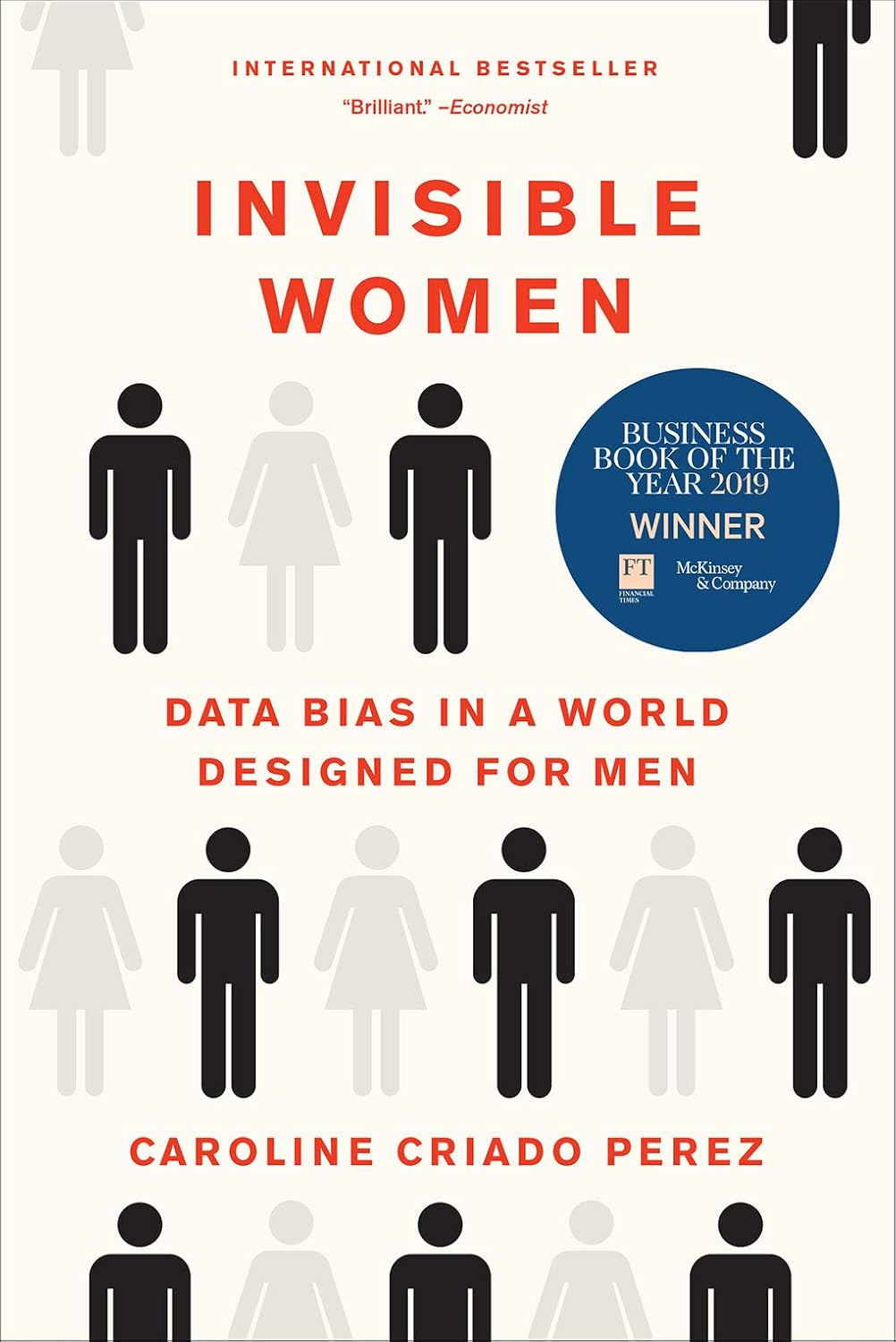I recently finished reading Invisible Women: Data Bias in a World Designed for Men by Caroline Criado Perez, a landmark examination of the gender data gap and its impact on women’s lives. I was drawn to this title due to my interest in social justice and gender issues and wanted to learn more about the systemic biases that affect women across various sectors—from the workplace to healthcare. This book came highly recommended as a thought-provoking read, and I was eager to dive in.
From the outset, it’s clear that this book is well-researched and meticulously organized, consisting of six sections that cover everything from daily life to medical care and public policy. Criado Perez adeptly illustrates how often data is based on male-centric models, leaving women to navigate systems that do not account for their needs. This premise is incredibly striking—data, which fundamentally shapes our world, typically excludes women, leading to real-world consequences like higher rates of injury in car crashes and inadequate healthcare responses.
One of the standout aspects of Invisible Women is its engagement with a diverse array of studies from various countries, including the U.S. and the U.K., as well as insights into less-discussed regions. The author highlights how the one-size-fits-all approach in everything from healthcare to public transport often ignores women’s unique requirements.
For example, in one of the chapters titled “Can Snow-Clearing be Sexist?”, Criado Perez discusses how snow removal often prioritizes male commuting patterns, neglecting the travel needs of women, which leads to increased risks and costs for society. Such chapters reveal not just implicit biases but also offer critical insights into the practical implications of overlooking women’s perspectives.
However, as noted by some readers, there are drawbacks. While the abundant data is eye-opening, several passages might feel overwhelming due to the depth of information presented. Additionally, while I appreciate that the author addresses the complexities of unpaid labor and the unpaid contributions women make in society, I found myself wanting further exploration of solutions. The book often reiterates the need for better data collection without presenting concrete steps or frameworks to facilitate change.
Another point of contention among readers is the pacing of the book. For some, including myself, there were moments that felt deliberately dense, bordering on monotonous, which could be alienating. As powerful and critical as the message is, I did find myself yearning for a bit more narrative flow to balance the exhaustive details.
Despite these minor setbacks, Invisible Women ultimately met my expectations and solidified its position as a crucial read for anyone interested in understanding gender inequality through a data-driven lens. Criado Perez’s writing is laced with energy and wit, which helps in making a heavy topic more accessible. Her ability to weave humor into devastating truths keeps the reader engaged while inciting frustration and awareness about the disparities faced by women.
In conclusion, I wholeheartedly recommend Invisible Women for its compelling insights and deeply impactful revelations. It’s not just a book; it’s a wake-up call to acknowledge that we must rethink how data is produced and utilized to create equitable systems for all. While it has its pacing issues and a few moments of redundancy, the overall message serves as a crucial reminder that women’s experiences matter. Prepare to be enlightened—and perhaps a bit infuriated—as you turn the pages of this essential work. Rating: ⭐⭐⭐⭐½.








